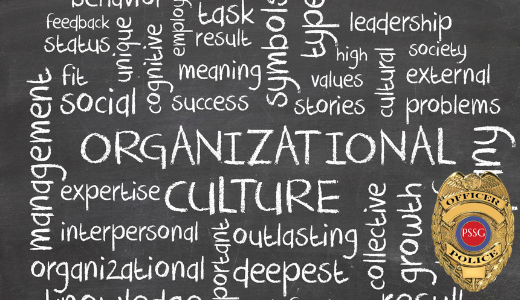Video Script 1 – September 15, 2020
Hello everyone. I’m Dennis Bowman, President of Public Safety Specialists Group.
Without a doubt every Law Enforcement Organization is coping with some aspect of Organizational Change.
As a Law Enforcement Officer with 30 years of experience plus an additional 18 years of university law enforcement teaching experience, I formed this consulting group because I recognized a real need to provide tools to agencies for leadership and management.
With the events of the past several months this need has become more apparent. In an effort to introduce you to what we do and how our common sense strategies work, we are creating a series of video chat sessions
Each session will provide some practical ideas and strategies for you to implement within your departments and we are providing additional resources in each session to help you get started.
With any client we always begin with the most obvious question. So this is where we will start today:
What is it about your department or unit that you would like to change?
Please keep that question in mind as we go through the four sessions of this topic.
Without question, we’re experiencing some very difficult and perilous times in American society. Virtually every aspect of law enforcement is experiencing strategic and tactical change as it responds to political and civil unrest, threats to officers and law-abiding citizens, destruction of property, and a host of other problems, such as low morale, early retirements, and decreased workloads.
The concept of Organizational Change is a positive way to respond to pressures for systemic change. These responses actually provide helpful and meaningful outcomes.
Organizational Change in relation to a law enforcement agency happens in many cases without even being aware that change is occurring, You have all experienced it in one way or another, some in minor ways and others perhaps in revolutionary ways.
Sometimes both the process and results were fair and acceptable, and sometimes they were unpleasant and unacceptable.
The goal here is to manage the process of Organizational Change with outcomes that are both desirable, enduring and positive for both those in the department and the communities they serve.
Getting to those goals will require a willingness to let those who will be impacted participate and to accept that there are many ways to arrive at a destination.
Organizational Change is a management theory that focuses on the stages that organizations go through as they evolve. Its principles apply to both short-term and long-term changes.
Once you know the characteristics of change, then strategies can be adopted to your own specific circumstances as you navigate through the change process.
Believe me, I know how challenging the process can be and how it can sometimes result in unexpected results if not managed properly.
Let’s take a quick look at the two basic types of Organizational Change.
First, unplanned change occurs when pressures are overwhelming and management may not have expected such a change.
This can result in unexpected and even chaotic effects on the organization and its personnel.
Then there is planned change. Planned Change is more systematic by design with the goal to move an organization or its subsystems to a new state. Its advantage is that it defines a desired future state for the organization.
Now let’s examine the models of organizational change. The first, Evolutionary change happens in small increments over time that add to a total amount of change.
This would be like reorganizing the detective unit within a 6 month period of time.
The evolutionary model happens in a series of phases:
Then there is the Revolutionary model. Just like the name implies, Revolutionary models are considered to be more massive change that can affect many parts of an organization.
This would be like streamlining senior command positions from four deputy chiefs to two deputy chiefs within a 30 day period.
Change can happen over longer periods of time with stability followed by bursts of major change.
Your organization most likely has a history of following these evolutionary or revolutionary models and you have experienced the impact of these types of changes.
To begin to deliberately introduce and manage change, you must be honest about the culture of your department so that you can identify what elements need to be changed or modified and begin to make plans to enact changes.
Culture can have many positive and negative characteristics to it. There are certain principles about changing the law enforcement culture, so let’s take a look at them:
Resistance to change is a big factor among law enforcement officers, particularly those in mid-management positions.
Management must understand what it is they are wanting to change, and not just one component of a system can be changed without affecting other components.
Change always generates stress within the workforce and that can often precede resistance and lack of productivity and expected performance.
Allowing participation in setting goals and devising strategies helps to reduce stress.
Finally, behavioral change comes in small steps.
Patience is critical to the change process and how it affects the workforce.
In the Next Video, we will look at the importance of LEADERSHIP in the change process.
Thank you for watching. I’m Dennis Bowman with Public Safety Specialists Group. Feel free to contact us at anytime for assistance.
Stay safe!!!

